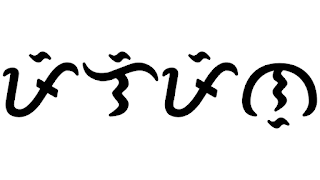Young Asian Americans in STEM and Medical Professions
Most of my family members have occupations in the STEM
fields or medical field or health care professions. STEM includes science,
technology, engineering, and mathematics.
When I was younger, my family pushed for me to go into these
types of fields. I pushed back, saying that I wanted to go into the arts. They
pushed back too. My dad would constantly remind me that “the money” is in more
“practical jobs”, urging me to look into becoming a computer engineer or a
doctor. I knew that those types of jobs weren’t for me.
While my eldest sister was pursuing a higher education at
UCLA, she declared pre-med right after high school. It wasn’t until the end of
her third year that she realized she did not have a passion for medicine. She
switched her major to International Development and received a certificate in
Interior Design.
My family was disappointed when she decided not to pursue a
medical profession, but eventually she was met with understanding and support.
I
feel as though this is very common within Filipino and other Asian American families and households.
Historically
and stereotypically, Filipinos dominate the nursing profession. According to
Rodel Rodis, a writer for Inquirer.net, Filipino nurses were recruited by the
United States to help care for soldiers in the United States Army. http://globalnation.inquirer.net/74321/why-are-there-so-many-filipino-nurses-in-the-us While many Chinese and Japanese nationals
were restricted from entering the United States, Filipino nurses were welcomed
into the States because their services were desired, and essentially needed
during wartime efforts. This was especially true during World War II, where the
Philippines played a vital role as an ally of the United States.
Filipinos nurses
were also encouraged to migrate to the United States after the war, by being
given special tourist visas and an opportunity to become citizens after
employment, Rodis says. This caused more and more Filipinos to seek nursing
careers, in order to move to the United States in the hopes for a better life.
This experience was
not isolated to Filipinos.
The United States
recruited and influx of Chinese students who showed exemplar technical skills
and were hand picked by the Chinese Nationalist government (Hsu, 2012). These
“several thousand” students migrated to the States while other government laws
prohibited “Asiatic” immigration, influenced by wartime hysteria.
It is not
surprising to me that many young Asian Americans feel the pressure to go into
STEM and medical fields because our ancestors (and the United States) felt that
way too. It was the only way for many Asians to come to the United States in
the hopes of a better way of life.
With the arrival of
Asian migrants into the United States, Asians have shown their hard work,
specifically in STEM fields, in order to succeed and make it in a new country
that they would find to call home. Because STEM fields have been proven to
provide Asian Americans with comfortable living situations, families push their
children into the same fields, as a way to set them up for success.
This ideal may have
trickled down into our Asian American values, inherently making young Asian
Americans to choose STEM fields because they feel like they need to in order to
achieve a good societal status.
Is
there a way we as young Asian Americans can reverse this and
possibly pursue careers in the fields that we want?
I
believe that young people should and can do anything that they feel
passionately about, especially young folks of color. But I do not believe that
we can do it all by ourselves. With other systemic and institutional forces
working against young people from marginalized communities, we, as young
people, need guidance, support, and mentorship. These can come in any form, but
these coming from our family members would mean so much more. Family
influences and acceptance can ultimately help young Asian Americans pursue the
careers that they want.
I am very blessed that my family, especially my mom,
supports me 100 percent in anything that I want to do, especially my passion
for writing and activism. But I know that some of my Asian American peers are
not as fortunate.
As 2017 begins, it is clear to see that
times are changing, but so much more can be done. The need for
Asian Americans in various fields has been growing, especially if we want equal
and accurate representation in our institutions. Getting passionate young
people in other fields, and helping them flourish within them, could do so much
for our Asian American community as it grows.
Multiple fields, such as the arts, are lacking in Asian
American representation, which finds its root in the STEM success model. With
support from our elders and family members, young Asian Americans can make
waves within the arts, government, business, and other fields as well.
Although this transition or reversal may be difficult, it
can be done. And I will be here for every step of the way.


















0 Comments